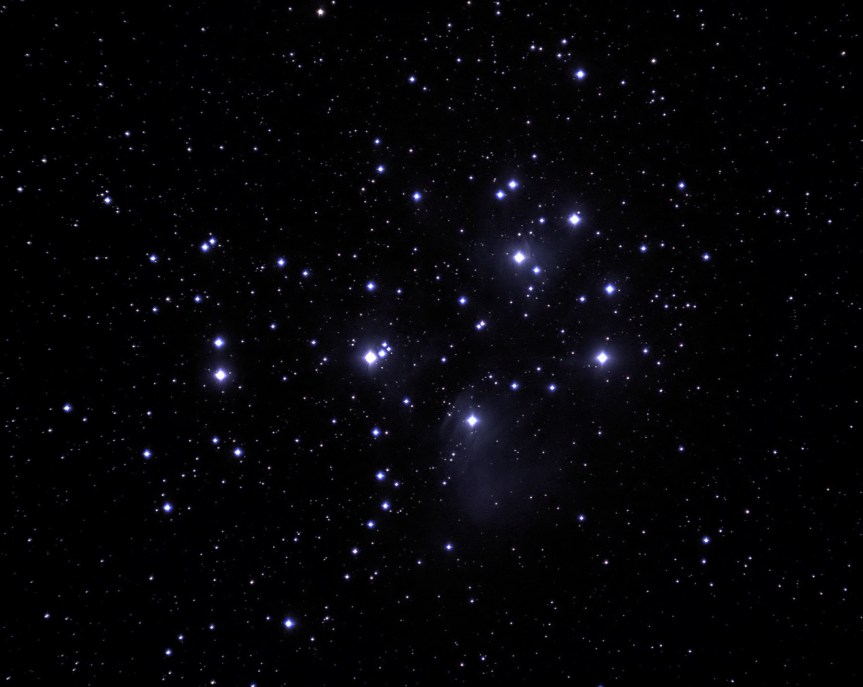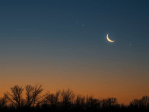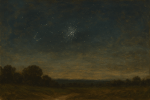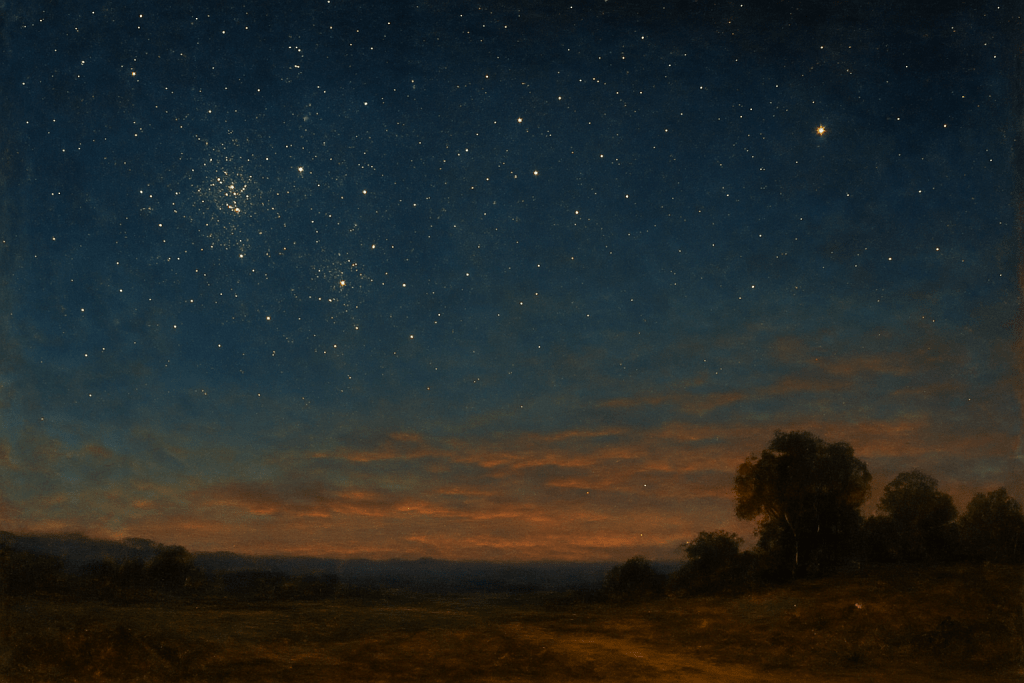November 19, 2025: With the moon near its New phase, moonlight no longer hides faint celestial treasures. Step outside to find the Great Andromeda Galaxy, the Double Cluster in Perseus, and the globular star cluster Messier 15 in Pegasus, high in the southern sky after dusk.
 Image Caption – The Andromeda Galaxy, also known as M31 since it is the 31st object on Messier’s list of diffuse sky objects, is the nearest large galaxy to our own Milky Way galaxy. Our galaxy is thought to look much like Andromeda. (NASA photo)
Image Caption – The Andromeda Galaxy, also known as M31 since it is the 31st object on Messier’s list of diffuse sky objects, is the nearest large galaxy to our own Milky Way galaxy. Our galaxy is thought to look much like Andromeda. (NASA photo)
by Jeffrey L. Hunt
Chicago, Illinois: Sunrise, 6:46 a.m. CST; Sunset, 4:27 p.m. CST. Times are calculated by the US Naval Observatory’s MICA computer program. Check local sources for sunrise and sunset times.
Related Articles
Venus Summary Article
November’s Celestial Wonders
With the moon near the New phase, its light does not blot out the fainter celestial wonders. Recently, articles here described how to find the Great Andromeda Galaxy (M 31) and the Double Cluster (h Per and χ Per) in Perseus. The globular star cluster in Pegasus is in an ideal spot for viewing during the evening hours.
 Chart Caption – 2025, November 19: The globular star cluster Messier 15 (M 15) can be see through a binocular near Enif, Pegasus’s nose.
Chart Caption – 2025, November 19: The globular star cluster Messier 15 (M 15) can be see through a binocular near Enif, Pegasus’s nose.
Step outside two hours after sunset — not so late considering the early sunsets — and look high in the southern sky. The Great Square of Pegasus, representing the Winged Horse’s body, is there. Its stars are about the same brightness as those in the Big Dipper.
Northern hemisphere sky watchers see the horse on its back. Pegasus’ neck begins at Markab, extending toward the southwest to Baham, which could represent an eye, and then up in the sky to Enif, the nose.
Star Clusters
 Photo Caption – The Pleiades star cluster. (U.S. Naval Observatory)
Photo Caption – The Pleiades star cluster. (U.S. Naval Observatory)
The globular star cluster, the 15th entry in Charles Messier’s catalog of faint sky objects that are not to be confused with comets, is about 4.2° to Enif’s upper right and in the same binocular field. With the binocular sharply focused, the star cluster appears as a fuzzy star about half the moon’s diameter. Through a telescope, individual stars are visible on the edges.
 Photo Caption -Photo Caption – Globular clusters are inherently beautiful objects, but the subject of this NASA/ESA Hubble Space Telescope image, Messier 3, is commonly acknowledged to be one of the most beautiful of them all. (NASA/ESA Photo)
Photo Caption -Photo Caption – Globular clusters are inherently beautiful objects, but the subject of this NASA/ESA Hubble Space Telescope image, Messier 3, is commonly acknowledged to be one of the most beautiful of them all. (NASA/ESA Photo)
M 15 is thought to be 40,000 light years away and about 130 light years across. At that distance, all the stars in the cluster shine with the intensity of 200,000 suns.
 Photo Caption – The Beehive or Praesepe star cluster (National Science Foundation Photo).
Photo Caption – The Beehive or Praesepe star cluster (National Science Foundation Photo).
Unlike the galactic star clusters — such as the Pleiades, Beehive, and Double Cluster — the globulars seem to be tightly packed with thousands of stars. They revolve around the galactic nucleus outside the plane of the Milky Way, like bees swarming around a hive.
 The dazzling stars in Messier 15 look fresh and new in this image from the NASA/Hubble Space Telescope, but they are actually all roughly 13 billion years old, making them some of the most ancient objects in the Universe. (NASA Photo)
The dazzling stars in Messier 15 look fresh and new in this image from the NASA/Hubble Space Telescope, but they are actually all roughly 13 billion years old, making them some of the most ancient objects in the Universe. (NASA Photo)
When they were mapped over a century ago, the globular clusters were concentrated toward the Sagittarius region of the sky, located low in the southwest after sunset during November.
Before the moon returns to the evening sky and its light washes out the dimmer celestial wonders, find Messier 15, as well as M 31 and the Double Cluster in Perseus.
LATEST ARTICLES
November 19, 2025: With the moon near its New phase, moonlight no longer hides faint celestial treasures. Step outside to find the Great Andromeda Galaxy, the Double Cluster in Perseus, and the globular star cluster Messier 15 in Pegasus, high in the southern sky after dusk.
 2025, November 18: Venus and Moon Before Sunrise: Final Pairing of the Apparition
2025, November 18: Venus and Moon Before Sunrise: Final Pairing of the Apparition
November 18, 2025: Before sunrise, the crescent moon appears near Venus for the final time during this apparition. The Morning Star rises shortly before daybreak, retreating into brighter twilight as it heads toward superior conjunction early next year. Look for Venus low in the east-southeast with the delicate crescent moon above the horizon.
 2025, November 17: Moon Pairs with Spica Before Sunrise; Planets Across the Sky
2025, November 17: Moon Pairs with Spica Before Sunrise; Planets Across the Sky
November 17, 2025: Before sunrise, the crescent moon pairs with Spica. Venus, Jupiter, Saturn, Uranus, and Neptune shine overnight. Mercury soon sprints into view.
 2025, November 16: Double Cluster: A Double Treasure Between Cassiopeia and Perseus
2025, November 16: Double Cluster: A Double Treasure Between Cassiopeia and Perseus
November 16, 2025: The waning crescent moon provides a view of the Double Cluster — two starry gatherings between Cassiopeia and Perseus, shining in the autumn evening sky.
 2025, November 15-17: Lovely Morning Crescent Chases Venus
2025, November 15-17: Lovely Morning Crescent Chases Venus
November 15- 17, 2025: See the crescent moon and Venus before sunrise, displaying earthshine as the moon steps eastward in front of Virgo during mid-November mornings.
Like this:
Like Loading…
Related


